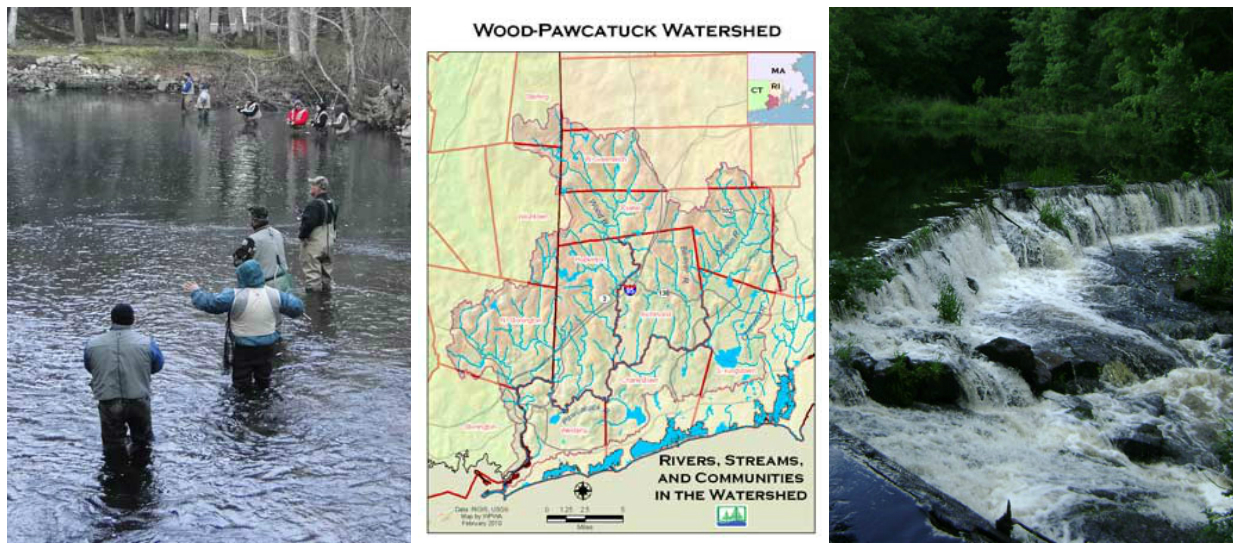
By ecoRI News staff
The recently completed
Wood-Pawcatuck Wild and Scenic Rivers Study, a bi-state partnership supported
by local organizations and the National Park Service, targets seven rivers in
the Wood-Pawcatuck watershed for National Wild and Scenic Rivers designation.
The two-state
effort included representatives from the eight Rhode Island and
four Connecticut towns in the watershed, as well as both state environmental
agencies and four conservation organizations.
Formal designation will allow the
National Park Service to provide money to be allocated to the 12 local
communities for future river stewardship.
“This bill … resulted in the formation of a
study committee that needed to answer two key questions: What is special about
the rivers, and how are we going to protect these special rivers for future
generations?”
The study committee included
town-appointed representatives from Charlestown, Exeter, Hopkinton, North
Kingstown, Richmond, South Kingstown, Westerly and West Greenwich, R.I., and
North Stonington, Sterling, Stonington and Voluntown, Conn.
The committee was
rounded out by representatives from the Rhode Island Department of
Environmental Management, the Connecticut Department of Energy and
Environmental Protection, Wood-Pawcatuck Watershed Association, Save The Bay,
The Nature Conservancy and the Audubon Society of Rhode Island.
Together, they
documented that the rivers contain many remarkable values. More importantly for
the current effort, they determined that there is already a great deal of
protection for these rivers through town and state regulations.
A stewardship
plan, developed to help protect the rivers, was created in cooperation with
local communities and is heavily influenced by local and regional needs, but
will have overall benefits to everyone in both states, according to the study
committee and its supporters.
The Wood-Pawcatuck
watershed is 300 square miles. The seven rivers up for Wild and Scenic
designation are the Beaver, Chipuxet, Green Fall-Ashaway, Queen-Usquepaugh,
Pawcatuck, Shunock and Wood.
The designation would help protect locally
important cultural and natural resources, including geology, ecosystems, water
quality, Native American archeology, historic mill villages, scenery, and
recreation opportunities.
The next step in this
process is to have all 12 towns and both states pass a resolution to support
the Wild and Scenic designation.
With this support, congressional delegates will submit a bill in October to
amend the National Wild and Scenic Rivers Act to include the seven rivers.
A Wild and Scenic Rivers
designation provides a key opportunity to promote local and state economic
development and tourism, according to supporters. It would also open up more
recreational opportunities and create more educational and outreach programs.
The stewardship plan
will focus on protecting water quality and drinking water. The Environmental
Protection Agency designated the Wood-Pawcatuck watershed as a “sole source
aquifer,” meaning that all of the residents of the watershed get their drinking
water from groundwater wells. Another priority of the plan is to preserve
important wildlife habitat.
“Anyone who has paddled
down these rivers; fished for trout from the banks; or just sat in the evening
and enjoyed quiet reflection on the water already knows that these rivers are a
special place,” Poyer said. “Everyone I’ve talked to considers it a
no-brainer to protect these rivers forever.”